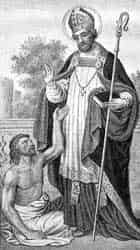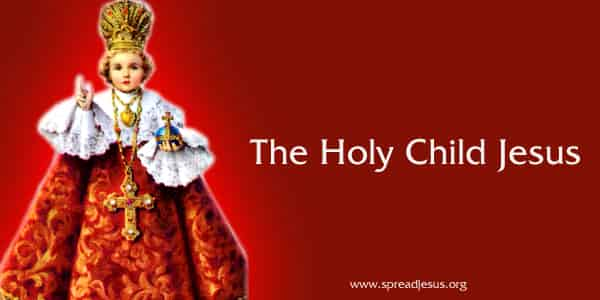Saint Stanislaus Catholic Saint
CATHOLIC SAINTS 28-12-2023, 19:39

Saint Stanislaus
Catholic Saint
Feast Day : April 11
Patronage: Cracow, Poland; Poland
Also known as: Stanislaus Szcepanowski
Stanislaus was the long-awaited son of Belislaus and Bogna Szcepanowsky, noble and devout parents, born on July 26, 1030, at Szczepanow, Poland. His parents dedicated the boy to God’s service. He was educated at Gnesen (also known as Gniezno) and perhaps Paris, then ordained a priest by Lampert Zula, bishop of Cracow. Bishop Lampert appointed the young man his preacher and archdeacon and awarded him a canonry benefit in the cathedral. Stanislaus’s eloquent preaching and holy example drew converts and reformed the morals of many who had strayed, both clergy and laity. Bishop Lampert offered to resign the see in Stanislaus’s favor, but Stanislaus would not accept the offer. Upon Lampert’s death, however, Stanislaus was consecrated bishop in 1072 under the direct orders of Pope Alexander II. The king of Poland at this time was Boleslaus II, called “the Cruel” for his rapacious lust and savage tyranny.
He little resembled Boleslaus I, named “the Brave,” who was crowned the first Christian king of Poland in the year 1000 by Holy Roman Emperor Otto III. Boleslaus II continually antagonized the clergy and nobility, and Bishop Stanislaus often remonstrated with the king for his scandalous behavior. At first Boleslaus tried to vindicate himself, then he appeared to seek repentance, then to relapse into his old ways. The final straw was the abduction of a noble’s beautiful wife and her forced imprisonment because she refused his adulterous proposals. Outraged, the Polish nobility called upon the archbishop of Gnesen and other court prelates to confront Boleslaus, but fear of reprisals kept them silent, leading the nobles to accuse the officials of conspiracy to commit the crime. But Stanislaus, upon hearing the nobles’ appeal, had no reservations about rebuking the king and reminded the monarch that if he persisted he would bring upon himself the censure of the Church and a sentence of excommunication. Furious, the king threw Stanislaus out, declaring that any man who addressed his sovereign with such effrontery was more fit to be a swineherd.
The king next tried slander and harassment against Stanislaus, accusing the bishop of never paying for a piece of land that had been bought years before and suggesting to the seller’s surviving nephews that they should sue for claim to the property. According to one biographer, the dead seller, a man named Peter, appeared in his grave clothes in court and vindicated Stanislaus. Boleslaus also accused Stanislaus of treason when the bishop sided with a group of nobles who were unjustly treated after being forced from their homes. Seeing no signs of a change of heart, Stanislaus excommunicated the king. Boleslaus coldly ignored the ban, but when he attempted to enter the cathedral at Cracow and the priests suspended the services at Stanislaus’s order, Boleslaus became enraged. He and some of his men pursued Stanislaus to the little chapel of St. Michael outside Cracow where the bishop was performing Mass. Boleslaus ordered his guards to kill Stanislaus, but the guards could not, claiming that the bishop was surrounded by a heavenly light. Disgusted by the guards’ weakness, Boleslaus entered the chapel and murdered Stanislaus himself. The guards then hacked the body to pieces and scattered them to be eaten by animals of prey.
The Lord protected the body parts, however, and they were collected by the cathedral canons three days later and buried at the door of St. Michael’s chapel where the bishop had died. Later historians have alleged that Stanislaus’s motives were more political than spiritual, and that Boleslaus may have had cause to kill the bishop for treason. But this is a position hotly denied by the Polish faithful. The murder of Stanislaus did not directly force the overthrow of Boleslaus II, but that act certainly added to the people’s discontent, especially after Pope St. Gregory VII placed Poland under an interdict. Bishop Lampert II moved Stanislaus’s relics to Cracow Cathedral in 1088.
.jpg)
The Gospel According to Mark Chapter 6:1-56 Mark 6:1 He departed from there and came to his native place,...
Learn more.jpg)
The Gospel According to Matthew Chapter 24:1-51 Matthew 24:1 Jesus left the temple area and was going away,...
Learn more
The Book of Ecclesiastes Chapter-1 Ecclesiastes 1:1 The words of Ecclesiastes, the son of David, the king of...
Learn more


